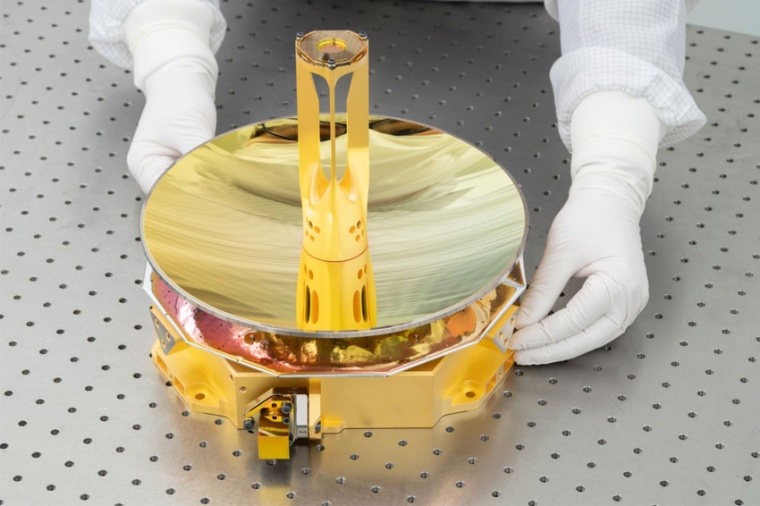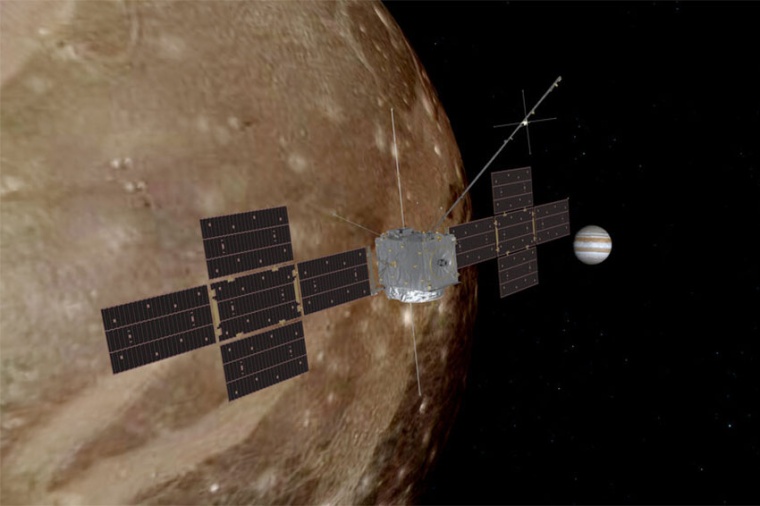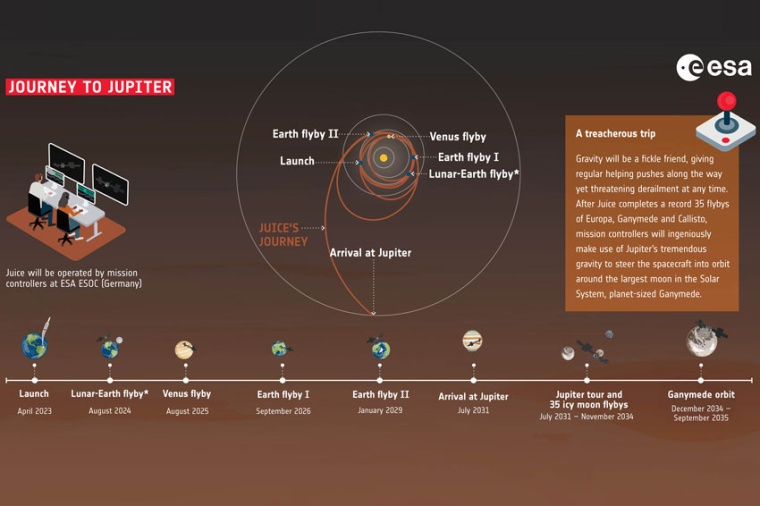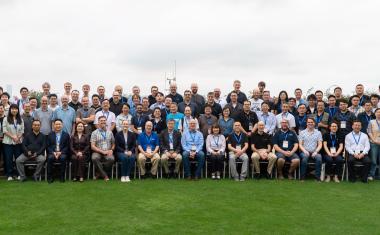Instruments to scrutinize Jupiter and his moons
Space mission Juice launches into space with telescope from Jena to explore the jovian system.
With one weather-related day late, the European Space Agency Esa launched its Juice mission to explore Jupiter and its moons. On board of the spacecraft are several telescopes and detectors. One of them is Gala which will use laser pulses to measure the surface of the Earth-like moon Ganymede. The instrument was developed by researchers at the Fraunhofer Institute for Applied Optics and Precision Engineering IOF in Jena together with the company Hensoldt Optronics. Gala will be the first ‘deep space laser altimeter’ to be used at a distance of approximately one billion kilometers from Earth.



It is the largest planet in our solar system and therefore appropriately bears the name of the Greek father of the gods: Jupiter. No fewer than 92 moons orbit this planet, and new satellites are being discovered by researchers all the time. Especially the moon Ganymede, which is covered with ice, is in the focus of the scientists, because it has a special similarity to Earth.
To investigate Ganymede, but also the moons Callisto and Europa as well as Jupiter itself, Esa sent a space probe in the direction of the giant planet, the ‘Jupiter Icy Moons Explorer’ – in short: Juice. To fulfill its research mission, a total of ten scientific instruments are on board of the spacecraft. One of them is the Ganymede Laser Altimeter, also known as Gala. The instrument is intended to measure the geophysical composition of Jupiter’s moon.
“As part of the Juice mission, a laser altimeter is being used for the first time as a high-precision metal optic for exploring Jupiter's icy moon Ganymede,” explains Dr Stefan Risse, head of the Precision optical components and systems department at Fraunhofer IOF. “With a laser altimeter, distances can be measured very precisely, even over very long distances,” he continues. “We hope to use it to gain new, fundamental scientific insights into the topography of Jupiter's moon Ganymede and the question of its origin,” he adds.
To collect this information, Gala sends laser pulses to the moon from an orbit around Ganymede – i.e., from about 500 kilometers – and receives reflected signals. From the transit time of the pulse, the distance to the lunar surface can be determined and the topography calculated. This requires a high-precision laser receiving unit. This was realized by Fraunhofer IOF in Jena together with Hensoldt Optronics from Oberkochen, Germany. For this purpose, the IOF developed a special reflecting telescope that captures the laser pulses that are reflected back from the lunar surface. In this way, Gala can measure the topography of Jupiter’s moon with a resolution of less than ten centimeters.
One particularly important question that Gala could answer in the future is whether there are water deposits on Ganymede: “The measurements with Gala take place at different orbital positions of the moon Ganymede in relation to Jupiter,” explains Dr Henrik von Lukowicz, head of the precision systems research group at Fraunhofer IOF. “If there were water below the surface, the tidal forces as a result of the moon’s motion would lead to a deformation of the surface. This means Gala could possibly even prove the existence of water.”
The Gala laser altimeter will be the world's first deep-space laser altimeter to be deployed at a distance of approximately one billion kilometers from Earth. The mission will take more than ten years: the Juice probe will initially need eight years to arrive in orbit around Jupiter. The subsequent three years will be spent exploring Jupiter’s moons Europa, Callisto and Ganymede, as well as Jupiter.
“On the way to Jupiter, the optical telescope we have developed must cope with extreme environmental conditions in ultrahigh vacuum, enormous acceleration during rocket launch, high temperature changes and intense cosmic radiation,” says Dr von Lukowicz, explaining the special demands on optical components in space. “The excellent opto-mechanical properties will make it possible to explore Jupiter’s icy moons even under these challenging conditions.”
Juice’s other instruments include the camera system Janus from Italy, the ‘Moons and Jupiter Imaging Spectrometer’ Majis from France, the UV imaging Spectrograph from the United States, and the Sub-millimeter Wave Instrument from Germany.
Company
Fraunhofer Institute for Applied Optics and Precision Engineering IOFAlbert-Einstein-Str. 7
07745 Jena
Germany
most read

Agile Robots takes over Idealworks completely
The company has acquired the remaining shares in the BMW Group spin-off and now holds 100 percent of the company.

Single Pair Ethernet Pavilion to Debut at SPS Atlanta 2025
Connectivity technologies for Industry 4.0 will be presented at the inaugural U.S. edition of SPS, featuring top industry leaders and live demonstrations.

United Robotics Group restructures
The company focuses on the healthcare industry and innovation.

First access for external users to the QSolid quantum computer
The prototype of the QSolid quantum computer was successfully integrated into the JUNIQ infrastructure of the Jülich Supercomputing Center.

Successful conclusion of the IVSM Fall Meeting 2025 in Haikou, China
The 2025 Autumn International Vision Standards Meeting (IVSM) took place from November 3 to 7 in Haikou, Hainan, and attracted over 120 R&D engineers worldwide.






